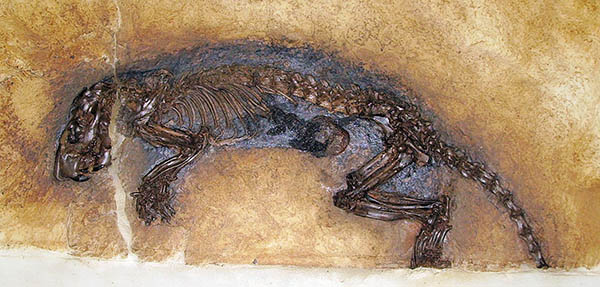

Hamster's evolutionary history is recorded by 15 extinct fossil genera and extends back 11.2 million to 16.4 million years to the Middle Miocene Epoch in Europe and North Africa; in Asia it extends 6 million to 11 million years. Four of the seven living genera include extinct species. One extinct hamster of Cricetus, for example, lived in North Africa during the Middle Miocene, but the only extant member of that genus is the European or common hamster of Eurasia. Read more ...
Discovery - November 2003
Scientists in Germany have discovered a 17 million-year-old hamster nest they claim is the oldest ever found. The researchers from the University of Bonn found the fossilized nest complete with nuts and other bits of food near a surface mining area near Garzweiler. Paleontologist Carole Gee, who was among the research team, said around 1,200 nuts had been gathered and were lining the walls and corridors of the nest in preparation for the animal's winter hibernation. Ms Gee added the fruit came from an unusual type of tree that is now only found along the North American Pacific coastline and in East Asia, and is related to the south European chestnut tree.The construction of the nest and the way in which the nuts have been stored means it was definitely built by a rodent, most probably a large hamster, or perhaps a squirrel. Stemming from the Miocene Epoch, that was characterized by the development of grasses and mammals, the scientists did not find the remains of the nest's inhabitant. During that period the climate was much warmer and Germany was also home to crocodiles, apes and palm trees.
ANCIENT AND LOST CIVILIZATIONS